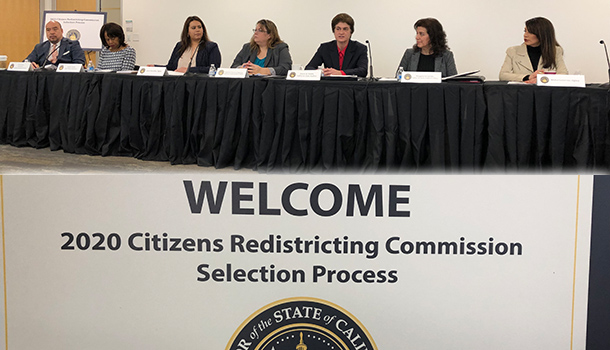
(Photos: Susan Lovenburg/CAFwd)
As California prepares to redraw district lines for future elections, the State is looking for citizens to apply to join the independent redistricting commission that voters approved creating more than 10 years ago, shifting that power away from legislators.
On March 1, California State Auditor Elaine Howle hosted a 2020 Citizens Redistricting Commission Town Hall in Sacramento to solicit feedback from partners of the 2010 effort. California Forward participated, along with California Common Cause, the League of Women Voters of California and others, to assist in structuring a strong outreach campaign for the coming year.
“In 2010, CA Fwd helped with aggressive outreach to make sure there was a qualified and diverse pool of applicants to serve on the Commission,” said Jim Mayer, president and CEO of California Forward. “We applaud the State Auditor for understanding the importance of amplifying the message through partner networks and look forward to assisting this critical effort in 2020.”
Every 10 years, after the federal census, California must redraw the boundaries of its Congressional, State Senate, State Assembly and State Board of Equalization districts to reflect the new population data. In 2008, California voters passed the Voters FIRST Act authorizing the creation of an independent Commission to draw the lines. The commission’s We Draw the Lines website documents the successful 2010 effort.
The commission's task of redrawing of these districts will be completed in August of 2021 and the new districts will be reflected in elections in 2022.
As an appointed, independent, and non-partisan entity free of executive or legislative control, the State Auditor’s role in redistricting is to:
- Conduct comprehensive outreach to ensure widest possible applicant pool
- Draft regulations for the Voters FIRST Act and Voters First Act for Congress
- Facilitate the formation of a 14-member redistricting commission every three years
Howle highlighted the success of the 2010 experiment in direct democracy which, unlike other redistricting plans, was not subject to endless legal challenges and has been largely free of the partisan wrangling that has plagued many other states. An extensive outreach campaign in 2010 garnered 30,000 initial applicants and 5,000 supplemental applications for the first seating of the Commission.
But Howle warns against any sense of complacency. States with similar citizen redistricting efforts have experienced a significant drop in interest from the first to the second round of redistricting, in part due to less coverage in the popular press. Howle believes that paid and earned media can promote awareness, but partner and stakeholder engagement is critical to driving applications for role of commissioner.
To be eligible to serve on the Commission, individuals must have been registered with the same political party (or declined-to-state) since July 1, 2015 and have voted in at least two of the last three elections.
The initial 60-day online application period for the 2020 Commission will launch on June 10 and remain open until August 9, 2019, with the full selection process culminating in the Commission being established no later than August 15, 2020. View the full process on the Auditor’s website.
A fact sheet and answers to the top ten questions regarding the Citizens Redistricting Commission are available on the Auditor’s website at http://www.auditor.ca.gov/bsa/crc.

